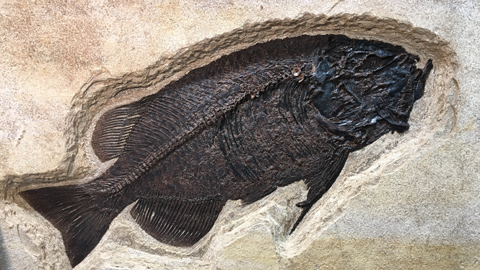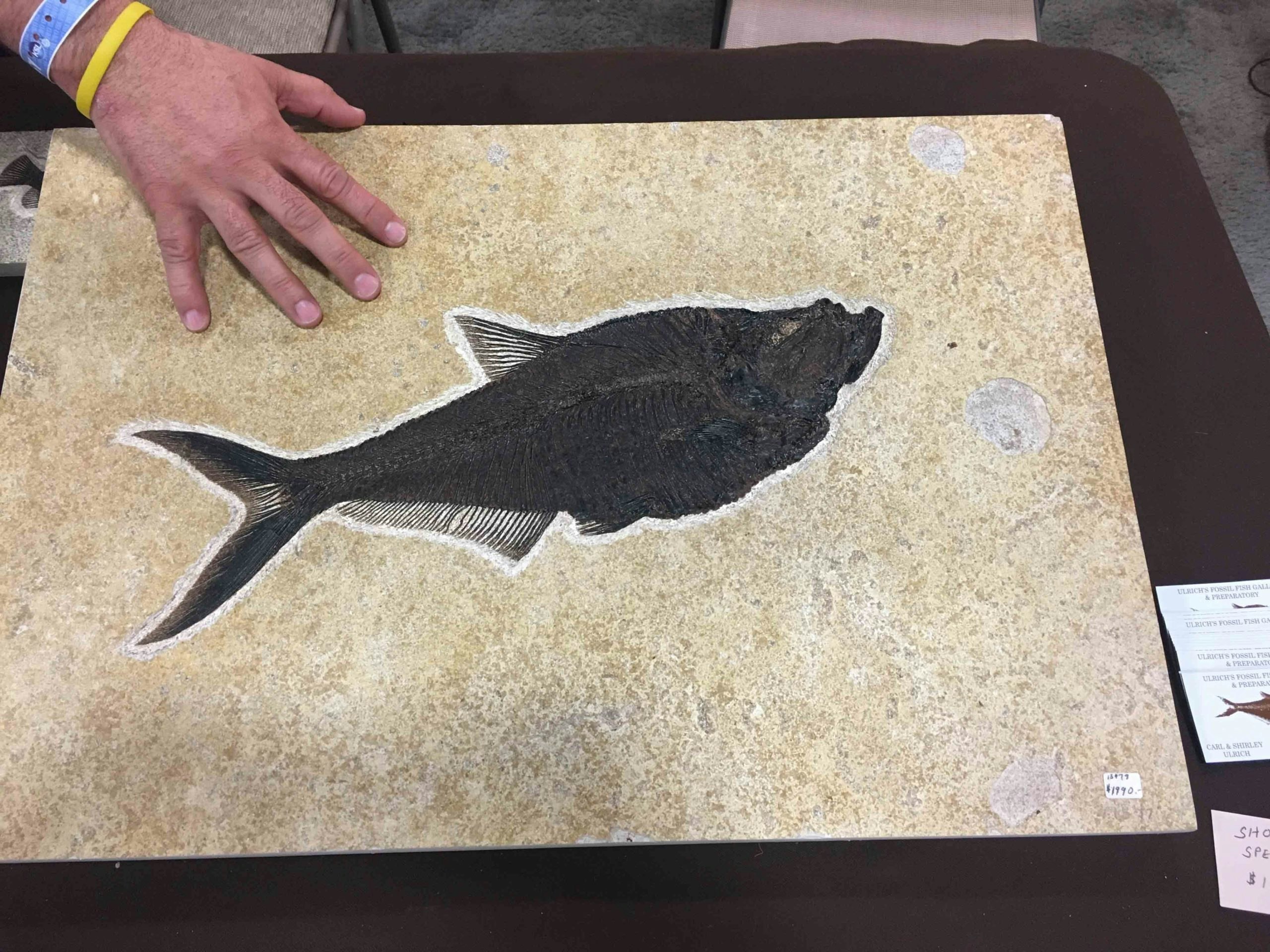By Wendy Corr, Cowboy State Daily
wendy@cowboystatedaily.com
A plesiosaur named “Harold” made international news last week as the only member of its species to have been unearthed. Its discovery near Glenrock raises the question: Why are so many fossils found here in Wyoming?
For decades, fossils have been found on Wyoming lands. In 1877, employees of the Union Pacific Railroad found large bones peeking out of the hills at Como Bluff near Medicine Bow. Since then, thousands of fossils have been unearthed across the state.
Two fossil experts – one a paleontologist who has spent decades researching discoveries in Wyoming, and the other a lifelong Wyoming resident whose family owns a fossil quarry near Kemmerer – explained that Wyoming’s geological history created the perfect conditions for preservation millions of years ago.
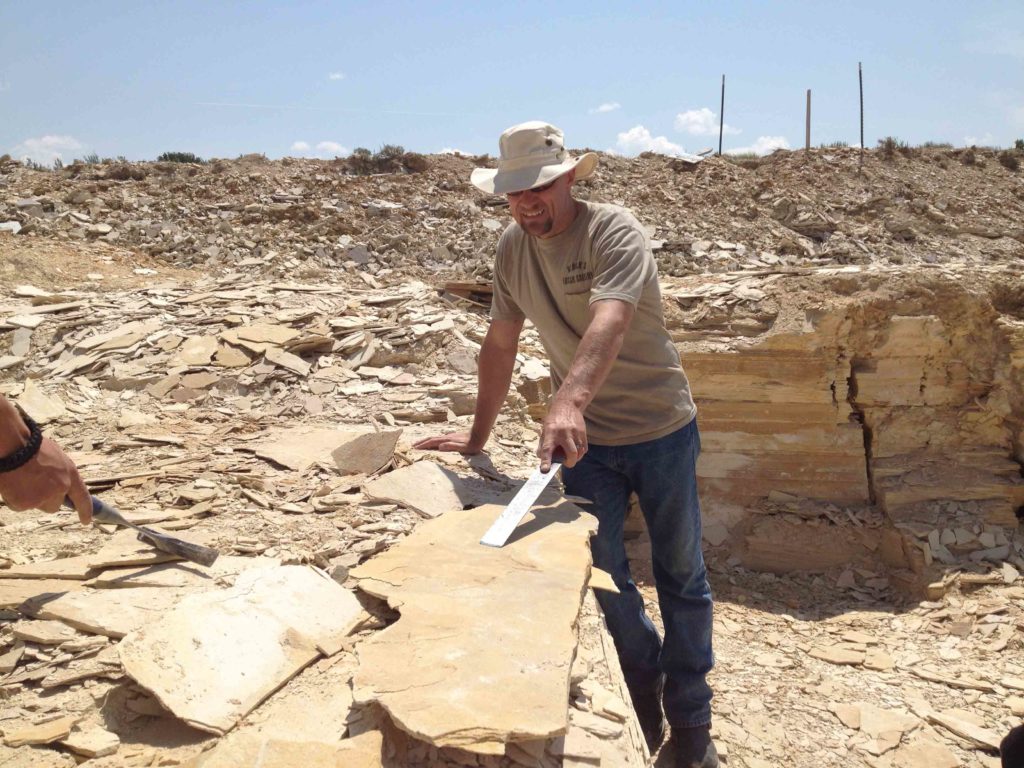

Fossil Beds Abound
“Badlands around Glenrock are not a single bone bed,” said paleontologist Dr. Scott Persons, whose research identified the Serpentisuchops pfisterae as the only animal of its kind to have been discovered in the world. “It’s not just a single graveyard; rather, it is sequential layer after layer after layer of rock, usually sandstone.”
Persons told Cowboy State Daily that skeletons of dinosaurs can be found in the different layers throughout the badlands near Glenrock.
“Not dinosaurs that all died together in one mass event or something like that,” he clarified. “Rather, dinosaurs that died out gradually over the long course of their lives, living in the area for many millions of years.”
In the Green River Formation in southwest Wyoming, which is where Ulrich’s Fossil Gallery is located, the bluffs contain rich deposits of fossils throughout the entire Kemmerer area.
“The Green River Formation was an inland freshwater lake that was deposited roughly 50 to 55 million years ago,” said Paul Ulrich, whose family owns a quarry rich with fossilized fish.
“Lots of fish – freshwater stingrays, garfish – if you’re lucky the occasional bird or fossilized palm frond or turtle,” he told Cowboy State Daily. “A great variety.”
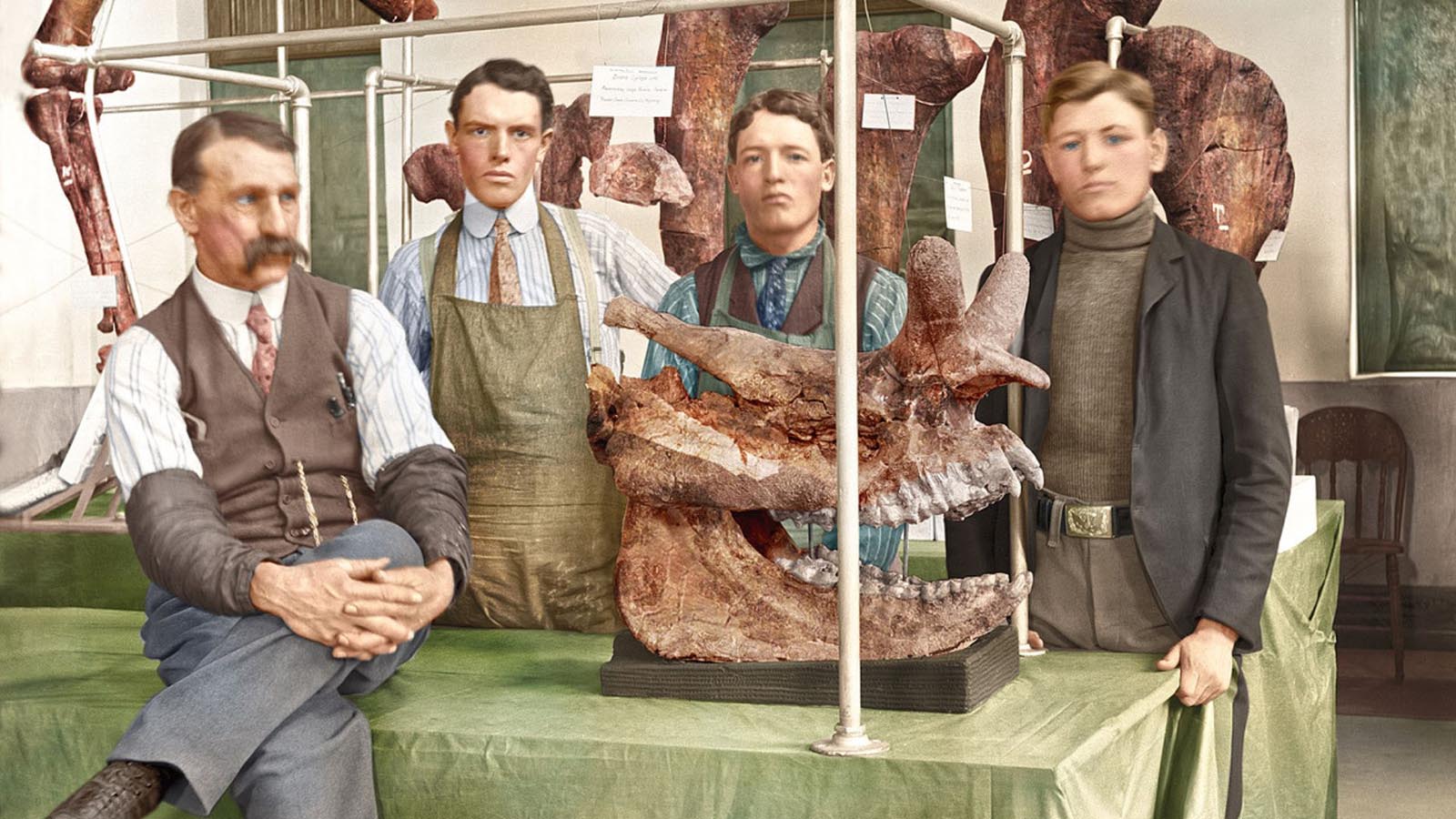


Perfect Conditions
Persons said that 70 million years ago, the earth was experiencing prehistoric global warming. High sea levels flooded North America’s inland regions, which is why sea creatures are often found in Wyoming’s sandstone formations.
He said in the case of the Serpentisuchops pfisterae, which was discovered in the badlands near Glenrock, when the animal died, its body sank down to the bottom of the sea floor and was covered by fine grain sediments.
“(Those) did a wonderful job of beautifully preserving the specimen,” he said. “This is ultimately sediment that was probably being washed down into the environment from the early Rocky Mountains, as the Rocky Mountains were beginning to form to the west. It’s just a great place for fossils to be preserved.”
Persons explained that fossilization only happens in the right environmental conditions, in which bones can sink down and are buried quickly.
“There must have been dinosaurs living on the tops of mountains, there must have been dinosaurs living in very, very dense forests,” he said. “But those are not environments where you can get fossilization occurring, because if you die on the mountain, your skeleton erodes away, along with everything else.
“Die in a dense forest, and there’s no loose sediment there to bury you. And there are all sorts of microbes and little organisms that eat your body up really, really quickly, including the bones, before you’ve got a chance to be preserved.”
Ulrich pointed out that Wyoming’s winds play a large part in fossil discoveries.
“The incredible exposure to the elements that we have – in particular wind, rain and snow – conditions are ripe for exposure of a wide variety of sedimentary rock that is fossil bearing,” he said.
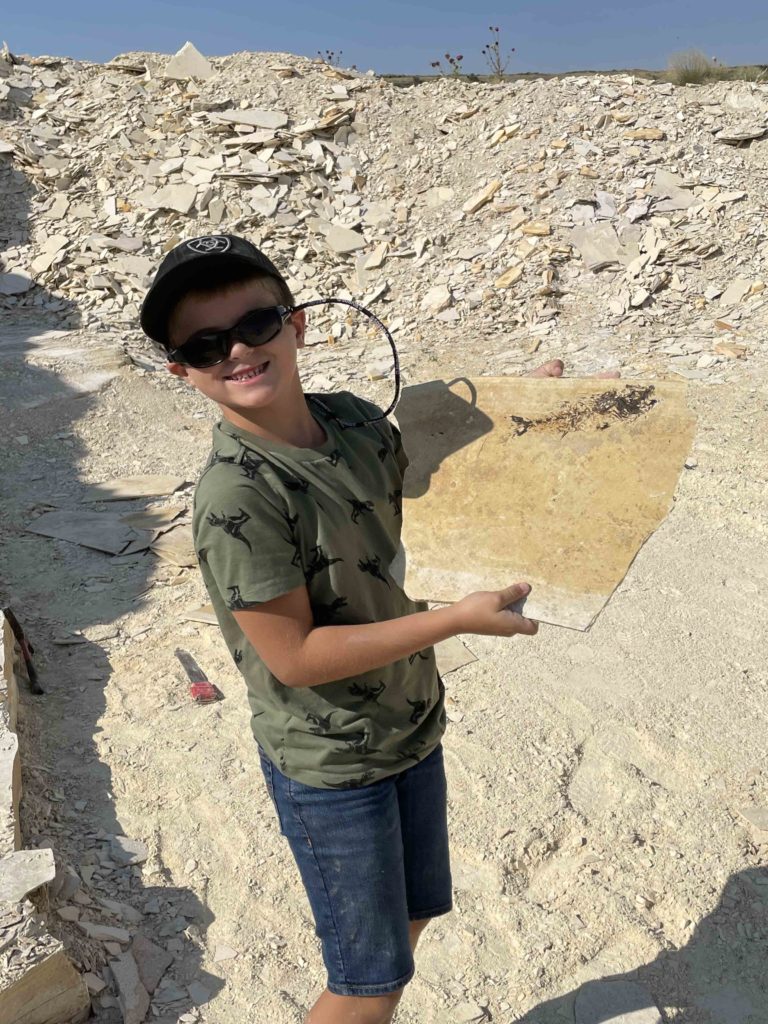

Dinosaur Digs Around the State
There are locations all around Wyoming where amateurs can try their hands at uncovering mysteries that have been buried underneath millions of tons of sediment over millions of years.
From the Dinosaur Center in Thermopolis to the Paleon Museum in Glenrock to Fossil Butte National Monument near Kemmerer, remnants of eons past can be unearthed by regular folk, not just scientists.
At the Dinosaur Center, visitors can “dig for a day” at active excavation sites that are within driving distance of the center. Staff and visitors have removed more than 14,000 bones from the excavation sites, mostly from long-necked sauropods, but an abundance of allosaurus teeth have been found at all of the nearby quarries.
Ulrich’s Fossil Gallery, which was founded in the 1940s by Ulrich’s grandparents, offers professionally guided fossil digging tours in the Green River Formation.
“Throughout the summer, we take guests up to experience the glory of finding your own fossil fish,” he said.
But because the Ulrich quarry is on state land, visitors can’t always keep what they dig up.
“Anything rare and unusual we find, we turn over to the state of Wyoming for further scientific studies,” said Ulrich.
Persons said a dig led by the Glenrock Paleon Museum is where he found his first dinosaur bone, and was hooked.
“That was way back when I was in elementary school,” he said. “The Paleon at the time, and they still do, offer the opportunities for families to contact them and to arrange to be taken out on some of the local digs.”
